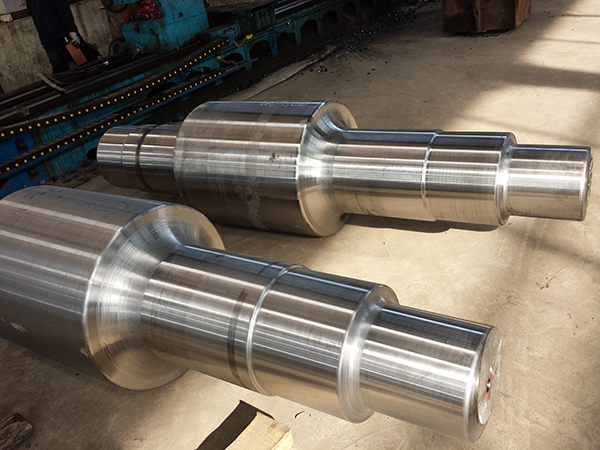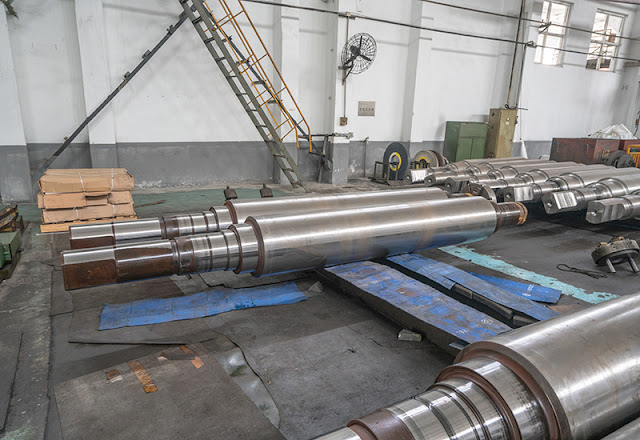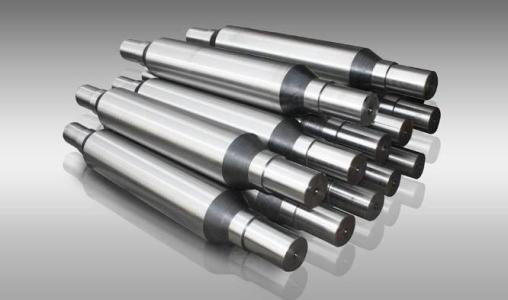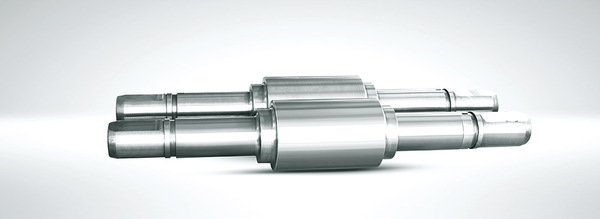All kinds of ductile iron rolls used in the past can not meet the higher requirements, especially the production line based on hot-rolled ribbed steel bars. In addition to the special requirements for the hardness and toughness of the roller for the finished stand, the slitting rolling technology is mostly adopted for the small-sized varieties, and the requirements of the pre-slitting and cutting passes on the rolls are sometimes even more stringent than the requirements for the finished rolls of the ribbed bars.
At present, the traditional cast iron roll is still widely used in most bar production lines. Centrifugal casting high Ni Cr acicular bainite ductile iron roll is generally used in the finishing mill. The single-groove steel passing capacity of the finished roll is only 50 ~ 400t / groove according to the rolling specifications and process conditions.
This means that a bar production line with a single shift (8h) output of about 1000t has to replace the rolling groove 3-5 times per shift, resulting in a long cumulative time for roll changing and groove changing, frequent adjustment of rolling mill and frequent production accidents. As a result, the operation rate of the whole production line is reduced, the technical and economic indicators such as yield are poor, the product size fluctuates greatly and the comprehensive production cost is increased.
Therefore, the development and application of high wear-resistant and long-life rolls is an important means to improve the production efficiency of the bar production line. At present, this kind of roll mainly includes centrifugal casting high-speed steel composite roll, forging high-speed steel roll ring combined roll and tungsten carbide roll ring combined roll.
The main performance indexes of the roller are core strength and wear resistance of the working layer. In addition to considering the economy and the matching of roll changing and groove changing period with shutdown time, it is more important to reasonably select rolls with different performance characteristics from the pass difference of each set of stands, the deformation characteristics of rolled pieces and the requirements of product accuracy.
The main task of the roughing stand of the bar mill is to reduce the cross-section at high temperature, which has a high rolling force and low rolling speed. Generally, the roll performance should be considered from the two aspects of ensuring the roll strength and hot cracking resistance. For general steel grades and normal rolling temperature, centrifugal casting ordinary ductile iron roll can be selected.
The medium rolling mill of bar rolling mill generally adopts an ellipse round pass system, which mainly undertakes the task of extending the rolled piece and providing an accurate profile for the finishing mill. The rolling force is moderate and the pass wear is uniform. Therefore, centrifugal casting ordinary ductile iron roll or medium nickel-chromium alloy ductile iron roll is generally selected. In order to ensure the stability of the size of the exported rolling pieces of the unit, the export stand can also choose high nickel-chromium alloy ductile iron rolls or high-speed steel composite rolls.
There are many varieties of bar finishing mill, complex pass shape, uneven distribution of deformation, high rolling speed and large variation of rolling force. Therefore, the performance requirements of the roller mainly wear resistance and toughness, and both hot cracking resistance and strength are taken into account.
For the extended pass of the simple section, high nickel-chromium alloy ductile iron rolls are generally used, and high-speed steel composite rolls can also be used. For the finished front hole of round steel or ribbed steel bar, it is recommended to select high-speed steel composite roller or tungsten carbide composite roller with higher wear resistance.
As the finished hole of round steel is very small, the tungsten carbide composite roller with the best wear resistance and the high-speed steel composite roll with higher surface hardness should be selected. The finished hole of the ribbed steel bar is affected by the transverse ribs, and it is very easy to produce thermal cracks or micro-cracks during use.
In general, all transverse ribs must be turned off, and the amount of heavy vehicles is large. Therefore, the economy of the expensive tungsten carbide combined roll will be greatly affected. It is better to select a high-speed steel composite roll. Due to the serious non-uniform deformation in use, the high-speed steel composite roller with good toughness and wear resistance and moderate hardness or the tungsten carbide composite roll with good toughness and wear resistance should be selected.
Due to the existence of slitting wedge, not only good wear resistance and toughness, but also reliable hot cracking resistance are required. It has been proved that the present high-speed steel composite roll and tungsten carbide composite roll do not have this characteristic, and the phenomenon of splitting wedge spalling easily occurs in use. Therefore, only high nickel-chromium alloy ductile cast iron rollers can be used.
For the extended pass of the simple section, high nickel-chromium alloy ductile iron rolls are generally used, and high-speed steel composite rolls can also be used. For the finished front hole of round steel or ribbed steel bar, it is recommended to select high-speed steel composite roller or tungsten carbide composite roller with higher wear resistance.
As the finished hole of round steel is very small, the tungsten carbide composite roller with the best wear resistance and the high-speed steel composite roll with higher surface hardness should be selected. The finished hole of the ribbed steel bar is affected by the transverse ribs, and it is very easy to produce thermal cracks or micro-cracks during use.
In general, all transverse ribs must be turned off, and the amount of heavy vehicles is large. Therefore, the economy of the expensive tungsten carbide combined roll will be greatly affected. It is better to select a high-speed steel composite roll. Due to the serious non-uniform deformation in use, the high-speed steel composite roller with good toughness and wear resistance and moderate hardness or the tungsten carbide composite roll with good toughness and wear resistance should be selected.
Due to the existence of slitting wedge, not only good wear resistance and toughness, but also reliable hot cracking resistance are required. It has been proved that the present high-speed steel composite roll and tungsten carbide composite roll do not have this characteristic, and the phenomenon of splitting wedge spalling easily occurs in use. Therefore, only high nickel-chromium alloy ductile cast iron rollers can be used.
If you are looking for rolls of rolling mills, please contact me.
Email: marketing2@hanrm.com; Whatsapp / Wechat: +8618392033938
More Articles You May Be Interested in:
New Process Sendzimir Roll Features














